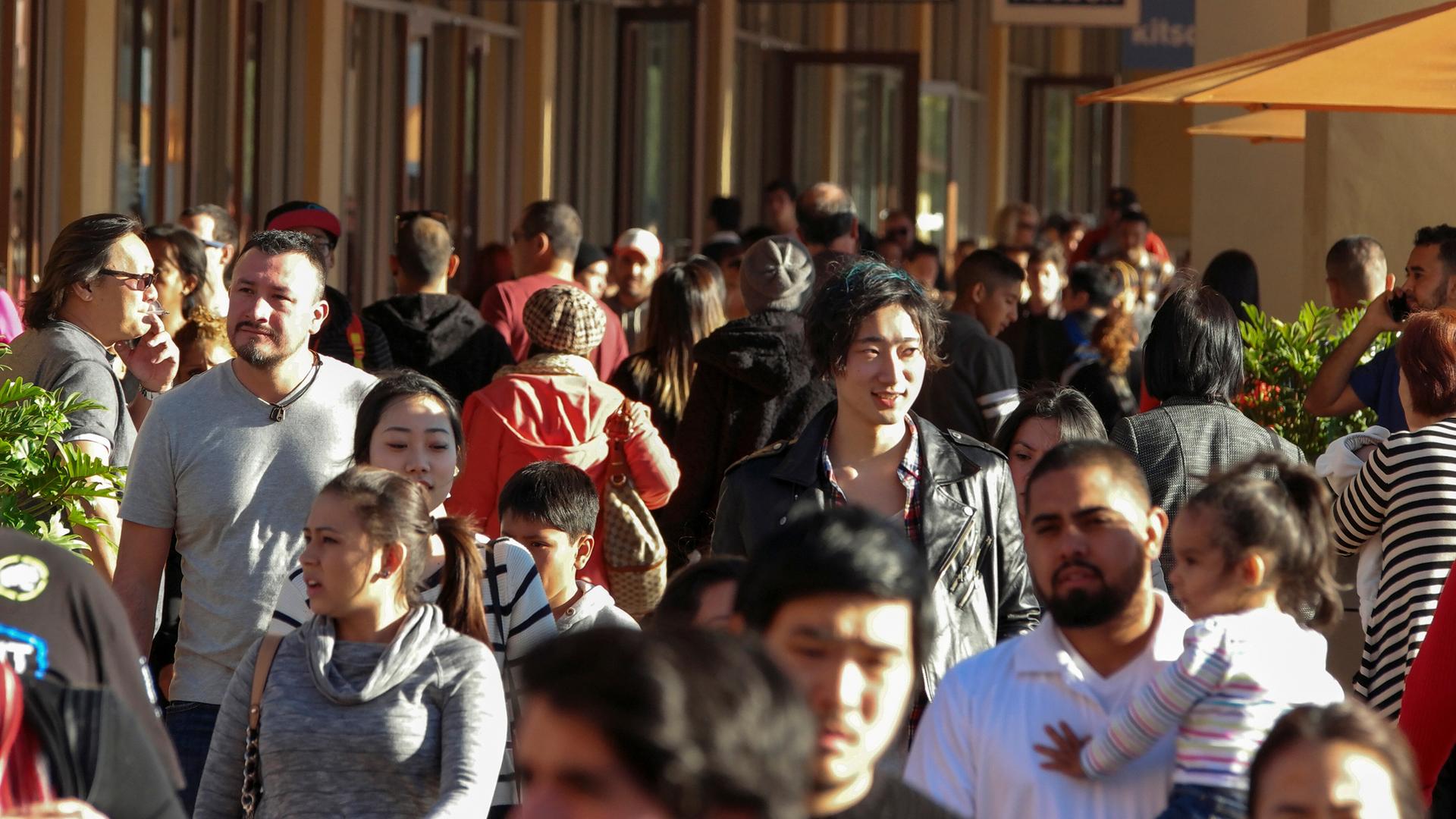People shopping in Los Angeles.
"You're not white, where are you from?"
This is how I was greeted a few months ago by a young Black man I interviewed in Los Angeles for a story I was working on.
Having lived in the United States for more than six years, the question did not surprise me, as it was not the first time I had to answer it.
I was born and raised in Barcelona, in northeast Spain, and although I had never given much thought to this matter, I always thought I was white. With dark Mediterranean features, but white.
How else could I define myself if someone asked me about my race?
In 2009, I moved to Miami and soon I became aware of the deep racial divide that still exists in this country.
In America, the definition of what being white means is much more limited than in Spain.
Genetically speaking, we Spaniards are a mix of the different civilizations that have settled in the Iberian Peninsula throughout the centuries: the Visigoths from northern Europe, the Phoenicians, Greeks and Romans from the Mediterranean region and the Moors from northern Africa.
That's why in the same family you can have someone with blond hair and blue eyes and someone with darker features.
In Spain we have had cases of racism in football stadiums and other instances, but race is not something we talk about. Unlike in other countries, in official documents you are never asked to choose your racial background.
When I moved to the US in 2009, because I am from Spain I was labeled Hispanic or Latino, a category that has been used by the US government from the 1970s to define the people from Spanish-speaking countries.
Without debating the accuracy of those words, there is agreement that Latino refers to a common language and cultural heritage.
Nevertheless, many in the US mistakenly believe that Latino it is also a racial category.
This became evident to me when in 2013 I moved to California to work as a correspondent for BBC Mundo.
Chatting with my new colleagues in the office — most of whom are British, Australians and Americans of Anglo-Saxon descent — I realized that they made a distinction between them, the whites, and we, the Latinos or "browns."
"Brown" is the word used in the US to describe the race of those who are neither white nor black.
In California, I have had similar experiences with some interviewees and with some of my American friends, who talk about "white people" as a group to which I do not belong.
Last time I visited my family in Spain, I told my mother that in California they do not consider me white.
"What do they think your are then?" she asked me.
"Latino," I said.
"Latino? but you are not from Latin America. You are from Europe. This Americans are crazy," she told me.
Since coming here, I've asked myself this question many times: Why is it so difficult for some in this country to understand that Hispanics are a multiracial community and that there are also white Hispanics, as well as black Hispanics or Asian Hispanics.
The truth is that many Americans of Anglo-Saxon descent do not consider white anyone coming from Latin America or Spain, unless they have blue eyes and blond hair, and sometimes not even those — if they speak Spanish.
To make sure that what I'm telling you is true, a few months ago I did an experiment with one of my English colleagues from the BBC in Los Angeles.
"If you had to fill out the census form for me, which racial category would you choose?" I asked him.
He looked at me and said: "Well, you're not white nor black … Hispanic maybe?" he said.
I told him that "Hispanic" is not a race but an ethnic category and a little bit confused he replied: "You're right, so I do not know."
I got a similar reply from a colleague who is of Mexican descent, who after staring at my face for a few seconds trying to find the answer to my question in my facial features, chose "Hispanic" as my race.
I believe that my confusion about which race I belong to is shared by many Hispanics living in the US.
In the 2010 census, 53 percent of Hispanics identified themselves as whites.
A curious fact of that survey is that between 2000 and 2010, 2.5 million Latinos — of a total population of over 50 million — changed their race, becoming white.
US media interpreted those figures as a sign that Hispanics aspire to join the white majority, as Italians and Irish people did a century ago, when they were not universally considered white because of their Catholic background.
In my case, I interpret those statistics as an example of the privileges that whites have enjoyed in the US since the country was founded, and the discrimination that still affects racial minorities who aspire to change race, if only on paper.
Does it matter that in the US you are not considered white?
I would like to think not, but the reality tells a very different story.
For me, living in this country has taught me the many nuances that still exist when it comes to talking about race, a concept in itself controversial, considered outdated by many, but that here is as valid as ever.
